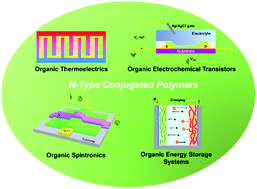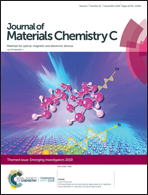Emerging research directions for n-type conjugated polymers
Abstract
In the past decade, π-conjugated polymers have been intensively studied in printed optoelectronic applications, such as organic field-effect transistors (OFETs) and organic photovoltaics (OPVs). After years of development, n-type conjugated polymers have exhibited comparable performance to that of their p-type counterparts in both OFETs and OPVs. Apart from OFET and OPV studies, several new research directions for n-type conjugated polymers recently appeared, including organic thermoelectrics, organic electrochemical transistors, organic spintronics, and organic energy storage systems. In these fields, n-type conjugated polymers are either less studied or their device performance lags far behind that of p-type ones. This review highlights the important role of n-type conjugated polymers in these emerging research directions and summarizes the recent progress in the development of n-type conjugated polymers in these new research fields. These fields require n-type conjugated polymers with new properties, such as better mixing with ionized dopants or good water permeability. Thus, new polymer design strategies and device engineering considerations are desired.

- This article is part of the themed collections: Recent Review Articles and Journal of Materials Chemistry C Emerging Investigators


 Please wait while we load your content...
Please wait while we load your content...